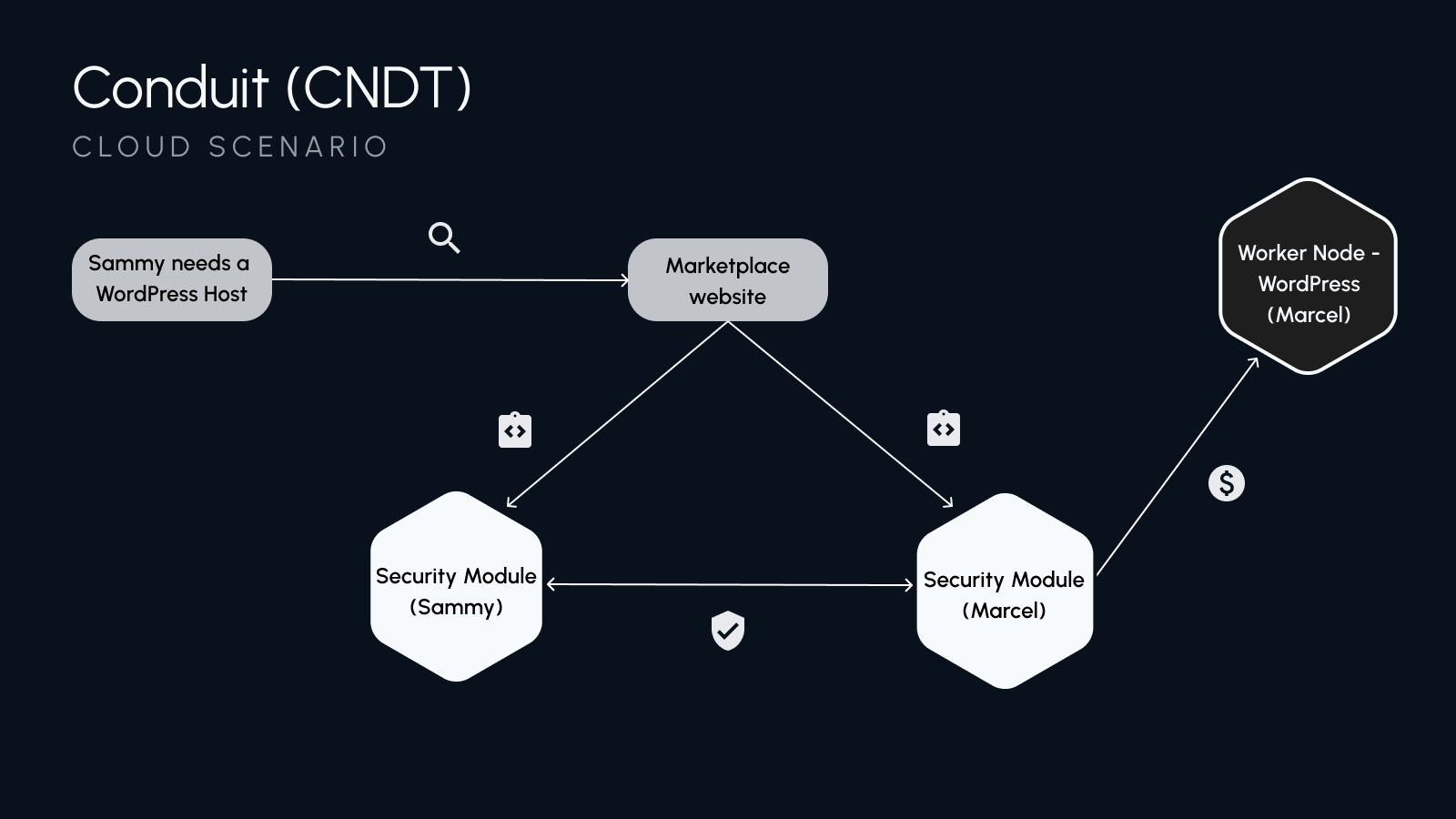Conduit Cloud Introduction
All computer networks are built on just that, computers, and Conduit Network is no different. Computers in the Conduit Network are categorized as different types of Nodes based on their function and their Trust Level. Here we will illustrate a very basic example of these different Node types in action.
First, let us establish the Parties in the scenario:
- Sammy has a small business and is interested in publishing a website on WordPress.
- Marcel is the operator of a Conduit Compute Module which is a type of Worker Node and has opted to let the Conduit Network manage and optimize the deployments on his node. (Marcel could choose to manage his Compute Module more directly, but that is a different topic.)
- Another party not considered in detail in this scenario operates a marketplace website that helps connect hosting buyers with hosts.
Sammy finds a WordPress hosting option from a Conduit Network marketplace website and decides to purchase hosting. This initiates Sammy's Security Module to place an order for hosting service based on what was described on the marketplace website. The Conduit Network finds a host matching the advertised requirements (Marcel's Compute Module). Marcel's Security Module picks up the order and starts provisioning the resources from his Compute Module. In this case, a container-based deployment of WordPress is deployed to Marcel's Compute Module and Sammy is sent credentials to manage the new WordPress site. (Note: many things in this example have been trivialized to focus on how these parties interact—topics like uptime, redundancy, backup and networking will be covered in other documentation.)
